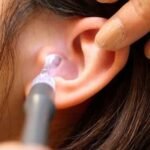Welcome to our latest exploration in the world of personality tests! While you may have heard of palm reading or face reading, today we’re diving deeper into a less conventional realm: the shape of your forehead. Surprisingly, this often-overlooked facial feature can reveal intriguing insights into your personality traits. So, let’s embark on this fascinating journey together as we uncover the mysteries behind the shape of your forehead and what it says about you.

The Science Behind It:
Before we delve into the various shapes and their meanings, let’s understand the rationale behind this unconventional personality analysis. Just like other facial features, the shape of our forehead is determined by genetics and bone structure. According to some proponents of facial reading, different forehead shapes are associated with distinct personality characteristics. While this field isn’t backed by empirical evidence, it remains an intriguing subject of study and speculation.
Analyzing Forehead Shapes:
Analyzing forehead shapes as a means of personality assessment is an intriguing concept, but it’s essential to recognize that such interpretations are not scientifically validated. Forehead shapes, like many physical features, vary widely among individuals and are influenced by genetics, ethnicity, and other factors. However, exploring these interpretations can be a fun exercise in understanding different personality traits.
Let’s delve into the interpretations provided:
- Broad Forehead: This interpretation suggests that individuals with a broad forehead are associated with strong intellect, natural leadership qualities, and visionary thinking. They are confident, assertive, and capable of initiating positive change. While this may not be universally true, broad foreheads could indeed convey a sense of confidence and assertiveness, which might align with leadership qualities in some cases.
- Narrow Forehead: According to this interpretation, individuals with a narrow forehead tend to be detail-oriented, analytical, and excel in tasks requiring precision and focus. They may not seek the spotlight but are reliable team players. This interpretation highlights characteristics commonly associated with analytical thinking and attention to detail, which can be valuable in various professions.
- Rounded Forehead: This interpretation suggests that individuals with a rounded forehead are creative, imaginative, empathetic, and nurturing. While these traits may not be directly linked to forehead shape, it’s interesting to consider how certain physical features might align with personality characteristics. Creative individuals may indeed possess a more expressive and open demeanor, but it’s crucial to remember that creativity and empathy can manifest in people with various physical attributes.
- High Forehead: Individuals with a high forehead are described as having strategic thinking, problem-solving skills, and intuition. These qualities can be valuable in personal and professional contexts. While the forehead’s height may not directly correlate with these traits, individuals with a perceived high forehead may exude a sense of confidence and intelligence, which could align with the interpretation provided.
- Low Forehead: This interpretation suggests that individuals with a low forehead are grounded, practical, and value stability and security. They may excel in roles requiring attention to detail and a methodical approach. While these traits may not be directly tied to forehead shape, individuals with a lower hairline might give off an impression of being more grounded and practical, although this could vary widely among individuals.
Overall, while analyzing forehead shapes for personality traits can be intriguing, it’s essential to approach such interpretations with skepticism and recognize that personality is influenced by a multitude of factors beyond physical appearance.
Conclusion:
While the shape of your forehead may not hold all the answers to life’s mysteries, it certainly offers a unique perspective on personality traits. Whether you have a broad, narrow, rounded, high, or low forehead, each shape brings its own set of strengths and qualities to the table. Embrace the uniqueness of your facial features, and remember that true self-awareness goes beyond outward appearances. So, the next time you glance in the mirror, take a moment to ponder the shape of your forehead and the fascinating traits it may reveal about you.
FAQs
- What does the shape of my forehead say about my personality?
- The shape of your forehead is believed by some to be correlated with certain personality traits. For example, a broad forehead may indicate leadership qualities, while a rounded forehead might suggest creativity.
- Is there scientific evidence supporting forehead shape analysis?
- Forehead shape analysis is not backed by empirical evidence and is considered more of a pseudoscience. However, it remains an interesting subject of study and speculation.
- Can forehead shape change over time?
- While the basic structure of your forehead remains relatively constant, factors such as aging and weight fluctuations can subtly alter its appearance.
- Are there any cultural differences in interpreting forehead shapes?
- Interpretations of forehead shapes may vary across different cultures and belief systems, much like other forms of physiognomy.
- Can I determine my forehead shape on my own?
- Yes, you can typically determine your forehead shape by looking at yourself in a mirror or feeling the contours of your forehead with your fingertips.
- Does forehead shape analysis apply to all races and ethnicities?
- Forehead shape analysis is a broad concept that is not limited to specific races or ethnicities.
- Can I change my personality by altering my forehead shape?
- No, your personality is shaped by a complex interplay of genetics, environment, and life experiences, and cannot be altered by changing your physical appearance.
- Are there any famous individuals with distinctive forehead shapes?
- While there may be celebrities with recognizable forehead shapes, it’s essential to remember that physical appearance alone does not define a person’s personality.
- Can forehead shape analysis be used for hiring or matchmaking purposes?
- Using forehead shape analysis for hiring or matchmaking purposes is not recommended, as it lacks scientific validity and could lead to discrimination.
- Are there any medical conditions associated with certain forehead shapes?
- The shape of your forehead is primarily determined by bone structure and genetics and is not typically associated with specific medical conditions.
- Do babies have distinct forehead shapes at birth?
- Babies’ forehead shapes may vary, but they typically develop more defined features as they grow older.
- Can facial expressions affect the perceived shape of the forehead?
- Yes, facial expressions can temporarily alter the appearance of the forehead, but the underlying shape remains relatively consistent.
- Is there a correlation between forehead size and intelligence?
- There is no scientific evidence to support a correlation between forehead size and intelligence.
- Can forehead shape analysis be used in psychological assessments?
- Forehead shape analysis is not recognized as a valid method in psychological assessments or diagnostics.
- Are there any cultural practices related to forehead shapes?
- Some cultures may have beliefs or practices related to physiognomy, including interpretations of forehead shapes, but these vary widely.
- Can hairstyles affect the perception of forehead shape?
- Yes, certain hairstyles can visually alter the appearance of your forehead, but they do not change its underlying shape.
- Are there any myths or legends associated with forehead shapes?
- There may be cultural myths or legends related to physiognomy, but they are not scientifically validated.
- Do identical twins have identical forehead shapes?
- Identical twins may have similar forehead shapes due to shared genetics, but slight variations can occur due to factors like prenatal environment.
- Can forehead shape analysis be used in criminal profiling?
- Using forehead shape analysis for criminal profiling is not supported by scientific evidence and could lead to biased conclusions.
- Is there any way to enhance or alter my forehead shape?
- Cosmetic procedures such as forehead augmentation or reduction surgery exist, but they carry risks and should be considered carefully after consultation with a qualified medical professional.
Related posts:
 “WellHealthOrganic: Nurturing Stress Management”
“WellHealthOrganic: Nurturing Stress Management”
 30 Micro Habits to Transform Your Life in a Few Months
30 Micro Habits to Transform Your Life in a Few Months
 “Summer Gut Health: Essential Tips for a Happy Gut”
“Summer Gut Health: Essential Tips for a Happy Gut”
 Decoding the ‘Love Brain’ Syndrome: 5 Signs to Watch Out For
Decoding the ‘Love Brain’ Syndrome: 5 Signs to Watch Out For
 Beauty Secrets: Your Guide to Health and Beauty
Beauty Secrets: Your Guide to Health and Beauty
 What Is Swimmer’s Ear: Causes, Symptoms, Treatments, and Prevention
What Is Swimmer’s Ear: Causes, Symptoms, Treatments, and Prevention
 Effective Communication to Deep Breathing: 5 Anger Management Tips to Prevent Relationship Damage
Effective Communication to Deep Breathing: 5 Anger Management Tips to Prevent Relationship Damage
 Understanding the Impact: How Nightmares Affect Your Mental Health
Understanding the Impact: How Nightmares Affect Your Mental Health
 How to Reduce Belly Fat: Effective Tips and Strategies
How to Reduce Belly Fat: Effective Tips and Strategies





